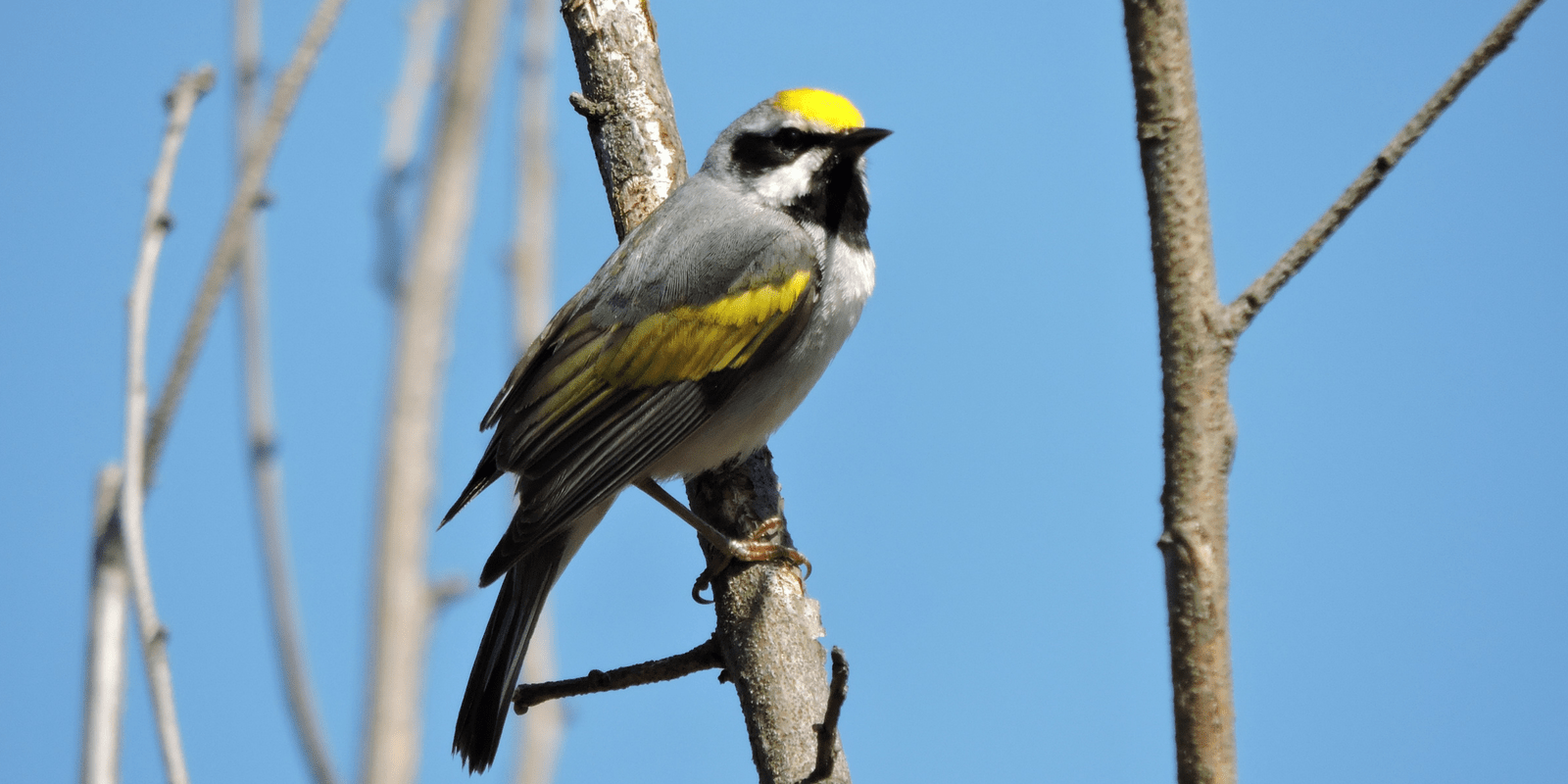We have much more to do and your continued support is needed now more than ever.
A golden opportunity for the golden-winged warbler

Weighing less than two nickels, a golden-winged warbler flies south from the Appalachian Mountains to winter in a shade-grown coffee plantation of Central America. Every day, an increasingly rare species fights against all odds to complete its annual migration.
Golden-winged warbler numbers have plunged downward by 66 percent since the 1960s, with a 98 percent decline in the Appalachian Mountain region. Once common throughout forests of the Midwest and East, they now breed only in two isolated populations in the Great Lakes region and the Appalachians.
These choosy songbirds rely on thickets and young trees for nesting and then move to bigger forests to raise their chicks. Only about 400,000 breeding pairs remain, one of the smallest populations of songbirds not on the endangered species list.
Today, we have a golden opportunity to save this chickadee-sized bird with its yellow cap and flashing gold wings. The Golden-Winged Warbler Working Group has a conservation plan to stop the decline and to increase populations by 50 percent by 2050. But the clock is ticking. The warblers suffer more losses every year. With your help, we can carry out the plan in time to help these brave songbirds battling for their future.
Tell Congress not to miss a golden opportunity! The Recovering America’s Wildlife Act will give our state wildlife agencies the ability to save wildlife in peril like the golden-winged warbler.
Act NowWhy is life so hard for golden-winged warblers? The birds require young trees and shrubs for nesting and older, bigger trees to hide chicks from predators. Natural wildfires and flooding once created a mosaic of younger trees and shrubs among older forests. Early agricultural practices also cleared lands in ways that encouraged the habitat the birds need. However, as forests have grown back, agriculture and forestry practices changed, and development eliminated shelter, nesting habitat has dwindled.
With support, landowners and agencies can maintain the bigger trees for chick-raising, and restore the critical younger forests and shrubs for nesting warblers. These same younger woodlands and thickets also shelter many other kinds of wildlife needing help, like ruffed grouse, American woodcock, and cottontail rabbits.
What can you do to help?
Migrating golden-winged warblers need to take breaks from their long journey in trees and shrubs. They benefit most from native plants that support nutritious insects for fueling their trip. Your backyard can be a wildlife garden. Find out here.
Next time you buy coffee, ask for shade-grown. Golden-winged warblers are among 42 of North America’s migratory songbirds that overwinter in the trees of shade-grown coffee plantations. As Central America’s forests are cut down for palm oil, cattle grazing, and sun-grown coffee, your coffee choice matters more than ever.
Finally, take a few minutes now on behalf of the golden-winged warbler. Tell your friends. Spread the news. And don’t forget to send a message to Washington, D.C.





















